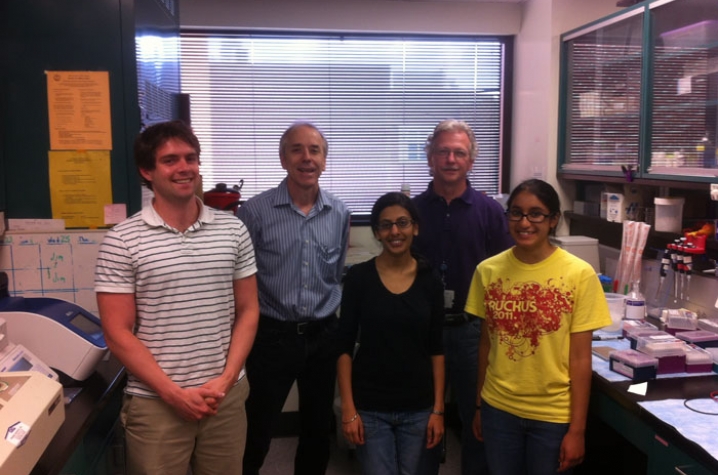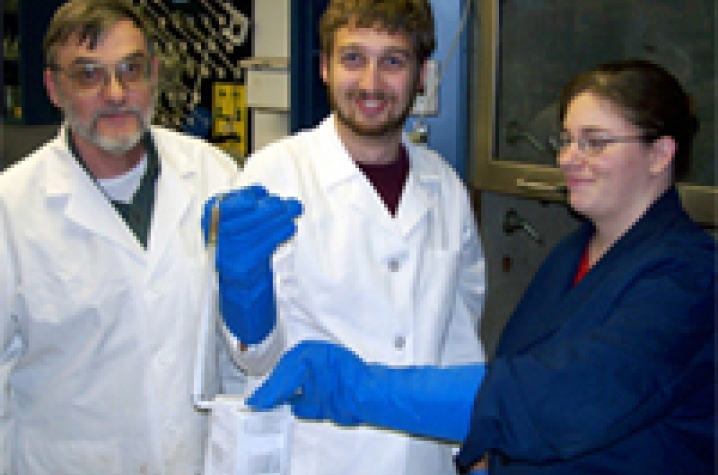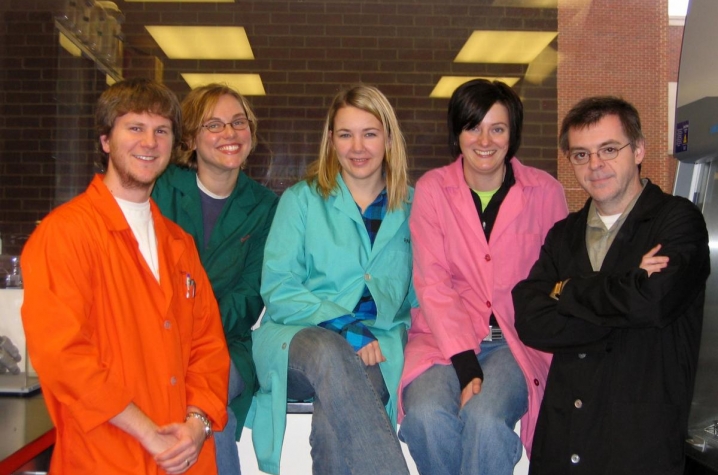Three Researchers from the Sanders-Brown Center on Aging Awarded Bright Focus Grants
LEXINGTON, Ky. (July 14, 2014) — The Bright Focus Foundation has announced that three different researchers from the Sanders-Brown Center on Aging at the University of Kentucky have received Bright Focus grants for 2014.
Professor Steve Estus and associate professors Harry LeVine and Paul Murphy were each recognized for their work on Alzheimer's disease.
"Only 25 Bright Focus grants are awarded worldwide each year, so it's an achievement to get one. But three Bright Focus grants in a single year is truly exceptional," said Dr. Michael Karpf, UK HealthCare's executive vice president of health affairs. "These awards are an appropriate reflection of Sanders-Brown's international reputation for groundbreaking research into the causes and treatments for Alzheimer's and other cerebrovascular disease."
The Bright Focus programs are designed to provide initial funding for highly innovative experimental ideas. Most awardees use the grant funds to demonstrate key findings that lead to later interest and additional funding from industrial or governmental funding agencies. This year, Bright Focus awarded 25 grants worth a total of $8.7 million. The three grants awarded to the Sanders-Brown Center on Aging total $605,000.
Each of the three grants awarded to Sanders-Brown addresses a different aspect of Alzheimer's disease (AD) detection, prevention and treatment.
Building on previous research identifying hereditary differences in a gene known to be associated with a reduced risk of AD, Dr. Estus and his lab will try to demonstrate that this gene inhibits the production of cells beneficial to the prevention of AD. Ultimately, this work could lead to new treatments for the prevention of AD.
LeVine's lab will be looking into a molecule that helps in early detection of AD. By honing in on the specific neurons in the AD brain marked by this molecule, Dr. LeVine and his team hope to learn what makes humans uniquely susceptible to AD, with long term goals to improve animal models of AD and identify potential therapeutic strategies.
In 2012, Murphy worked with fellow Sanders-Brown researcher Dana Niedowicz to create a genetically engineered mouse with obesity, diabetes and AD-like symptoms to study why obese people seem to have a higher risk for AD or other dementias. This mouse with "mixed dementia" will be used to search for treatments among therapies that have already undergone clinical safety trials or are already being used to treat other conditions.
Dr. Guy Eakin, vice president of scientific affairs for the Bright Focus Foundation, notes that three Bright Focus awards for Sanders-Brown researchers isn't a complete surprise.
"Sanders-Brown has long been a well-recognized leader in Alzheimer’s disease research," Eakin said. "Their work is exceptionally compelling, and ranks amongst the most promising ideas currently being studied in the effort to understand and conquer Alzheimer’s disease."
Bright Focus Foundation is a nonprofit organization supporting research and providing public education to help eradicate brain and eye diseases, including Alzheimer's disease, macular degeneration, and glaucoma. Bright Focus awards are intended to advance early-stage, investigator-initiated research around the world by providing funding for unique research hypotheses with the potential to grow into future clinical realities. For more information on the Bright Focus Foundation and its 2014 grants, go to www.brightfocus.org/Grants2014
The University of Kentucky’s Sanders-Brown Center on Aging (SBCoA) was established in 1979 and is one of the original ten National Institutes of Health (NIH)-funded Alzheimer’s disease Research Centers. SBCoA is internationally acclaimed for its progress in the fight against illnesses facing the aging population.







